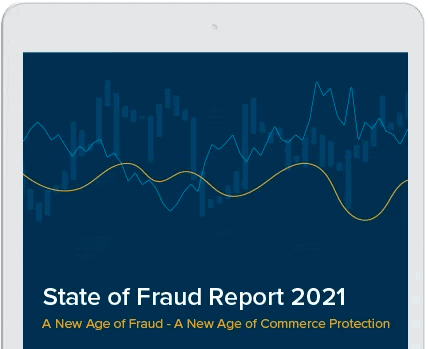In the world of ecommerce there are few places where brands stand to increase their revenue potential more than in the area of payments and payment technology. And, it’s safe to say, not enough brands are thinking about that — or at least brands aren’t thinking about that enough.
The conclusions were hard to dispute, after listening to Jordan McKee of 451 Research, part of S&P Global Market Intelligence, who sat down recently for a fireside chat with the Signifyd team. At the heart of the chat was Jordan’s recently published “451 Nexus: Payments in the (New) Roaring Twenties.”
The report is a sweeping look at “the strategic power of payments” and the reasons why recognizing that power has never been more important for retailers than it is in February 2022. In it, McKee explains that the explosion in popularity of omnichannel fulfillment, such as curbside pickup, has presented merchants with a golden opportunity to grow online revenue.
- Merchants are missing out on $36 billion a year by declining good online orders and because they fail to offer consumers the payment methods they prefer.
- 55% of merchants who saw the payment experience as a strategic imperative said the pandemic has had a positive impact on their revenue. Only 25% of those who saw payments “somewhat or not at all strategic” said the pandemic had a positive effect on their revenue.
- Payments optimization is one of the last areas where online merchants can unlock growth — adding up to 10% to their top lines.
But relying only on changing consumer habits for growth isn’t enough. In fact, McKee’s report notes, by paying proper attention to the payments and checkout leg of the customer journey, retailers can increase revenue by as much as 10%.
Easing pandemic restrictions won’t bring back the old days of commerce
The key is ensuring your payments and checkout experience is built for the post-pandemic era. The first thing to remember is that while the pandemic may have started consumers down the road (literally) to curbside pickup, the easing of pandemic restrictions will not mean a return trip to the old days. Ecommece will continue to flourish.
“The genie is not going back in the bottle on expedited fulfillment,” Signifyd CMO Indy Guha is quoted as saying in McKee’s report, which estimates that online sales will top $8 trillion in sales by 2025.
With that opportunity, comes a need to understand the unique ways in which that opportunity can be missed when selling online. McKee looked at two areas where merchants are squandering the chance at capturing significant revenue: false declines and the failure to provide alternative payment methods.
In fact, 451 Research estimated that more than $16 billion in sales was declined over a 12-month period and that more than $20 billion a year is being lost in sales to consumers who don’t see their preferred payment method on a brand’s site. That includes those who’d like to buy now and pay later or pay now, but with digital cash, digital wallets, bank transfers and the like.
Of course, retailers want to allow customers to pay the way they like, but “cards will only get merchants so far with that goal,” the report says.
Poor payment experiences are costing merchants billions and billions a year
So yes, inattention to customer experience is costing retailers multi-billions a year. But there is a broader mindset problem, as well, according to McKee’s research. His report says this became widely apparent during the pandemic.
During the pandemic, ecommerce boomed and became a larger portion of overall retail sales. Some consumers became new ecommerce customers and some existing ecommerce customers became much bigger consumers online. But the report indicates that not every retailer was ready for that shift.
McKee’s report illustrated that sad fact with retailers’ responses to two questions that together painted a picture of early adopters and laggards and the difference in their online fortunes. The 451 Research report notes that of brands that view payments as a “highly strategic” area to focus on, 55% said that the pandemic was having a positive impact on their revenue.
And then there were the merchants who treat payments as “somewhat or not at all strategic.” Only 25% of them said that the pandemic was having a positive impact on their revenue. So, what are the retailers who view payments as strategic doing right? The report noted that they see their initiatives as aligned with three things — growth, customer experience and cost optimization. “We call this the ‘payments trifecta’,” the report says. “Every payments initiative being undertaken should map back to one or more of these goals to drive results.”
Optimizing the payments stack is a key to increasing revenue
And so, modernizing a payment stack by turning to order automation to ensure a smooth customer experience and being intentional about the payment methods you provide drives growth by increasing conversions, allowing cross-border expansion and allowing new channels, such as curbside pickup. It builds a better customer experience by eliminating friction during checkout, reducing false declines and the disappointment that comes with them, and by attracting different customer types with different payment preferences.
Finally, it helps manage costs in three ways by:
- Reducing the cost of accepting orders.
- Lowering operational costs through automation.
- Cutting down considerably on chargebacks due to more accurate decision-making.
The report concludes by noting that, that 10% in additional revenue is out there and that merchants should not be shy about going after it. They should ask their payment providers how they intend to take advantage of these new realities. And they should seek out partners who can help them be among the early adopters while leaving the laggards behind.
“Ultimately merchants need to treat payments as the inflection point of their shopper journey — every investment they’ve made to get the shopper down the funnel (e.g., marketing, advertising) is squandered if payment processes are not optimized,” the report says.
It’s hard to imagine a more important initiative for ensuring that 2022 is another year of growth for a retail enterprise.
Photo by Getty Images
Let’s talk about optimizing your payment experience.











